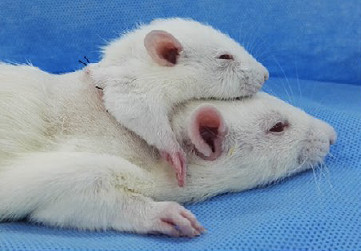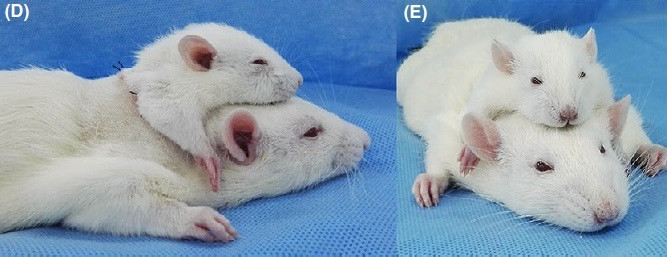Scientists have successfully transplanted a double-headed mouse
This technology is being gradually improved, but the risks they bring are still great.
Following the experiment of his predecessor, scientist Vladimir Demikhov created a two-headed dog, we have just successfully matched a mouse. As with the previous experiment, they paired the head of a mouse into a complete large mouse.

Transplant a mouse's head into a large mouse.
In a new research report on CNS Neurosciene and Therapeutics, researchers in China paired the head of a smaller mouse on the neck of a larger mouse. As mentioned in the previous dog-head trial, the two heads are always larger than one head, always mathematically correct.

The goal of this first graft test is to study the avoidance of blood loss of the grafted head.
The goal of this first graft test is to study the avoidance of blood loss of a transplanted head, affecting brain activity when the head is grafted onto another body. This is one of the most important things that needs to be taken into account when grafting can be done on humans.
The first paired trials like this are all aimed at a single goal: applying head implants to humans. Every time we experiment, we find a new aspect or a new method of solving problems. The first day of grafting technology became true is not far (very).

We have taken a step closer to the head implant technology.
This time, how do they keep the implanted head alive? They connect the blood vessels on the grafted head to the bloodstream of a third mouse, to keep blood flowing continuously in the head. Once the head has been stabilized on the mouse that receives the new head, the blood vessels will be attached to the mouse. During the experiment, blood loss monitoring system did not detect any damage related to blood loss.
This is good news: one step closer to the head implant technology.
- 7 animals with two heads
- Found the two-headed soap as in myth
- Two-headed snakes bite each other for food
- Two-headed dolphin body washed up on the Turkish coast
- Detected two-headed rattlesnakes in the US
- The truth about a man with two heads is very famous in Mexico
- Extremely rare mini-double snake
- The two-headed calf was born in Morocco
- Scientists are feeding, studying two-headed sharks
- Detect additional fetal 2-headed shark weird
- The first two gray whales were discovered
- Two-headed snakes crawled into the home yard in America
 Green tea cleans teeth better than mouthwash?
Green tea cleans teeth better than mouthwash? Death kiss: This is why you should not let anyone kiss your baby's lips
Death kiss: This is why you should not let anyone kiss your baby's lips What is salmonellosis?
What is salmonellosis? Caution should be exercised when using aloe vera through eating and drinking
Caution should be exercised when using aloe vera through eating and drinking